If you’re looking to boost your brand strategy in 2025, I recommend checking out the top nine books that blend theory and practical insights. Titles like *The 22 Immutable Laws of Branding*, *Aaker on Branding*, and *The Brand Gap* offer powerful frameworks to create a clear, compelling identity. For industry-specific tips, consider *The Fashion Business Manual* or *Building a Strategic Brand*. Keep exploring these resources to find strategies that will truly transform your brand approach this year.
Key Takeaways
- Prioritize books that focus on industry-specific branding strategies, such as interior design, fashion, or digital platforms.
- Select titles offering practical tools like worksheets, case studies, and actionable steps for effective brand transformation.
- Consider recent publications or updated editions reflecting the latest trends and digital marketing landscapes for 2025.
- Choose authors with recognized expertise and credibility in branding, marketing, or industry-specific fields.
- Opt for visually engaging, well-designed books that enhance learning and application through illustrations and interactive content.
The 22 Immutable Laws of Branding
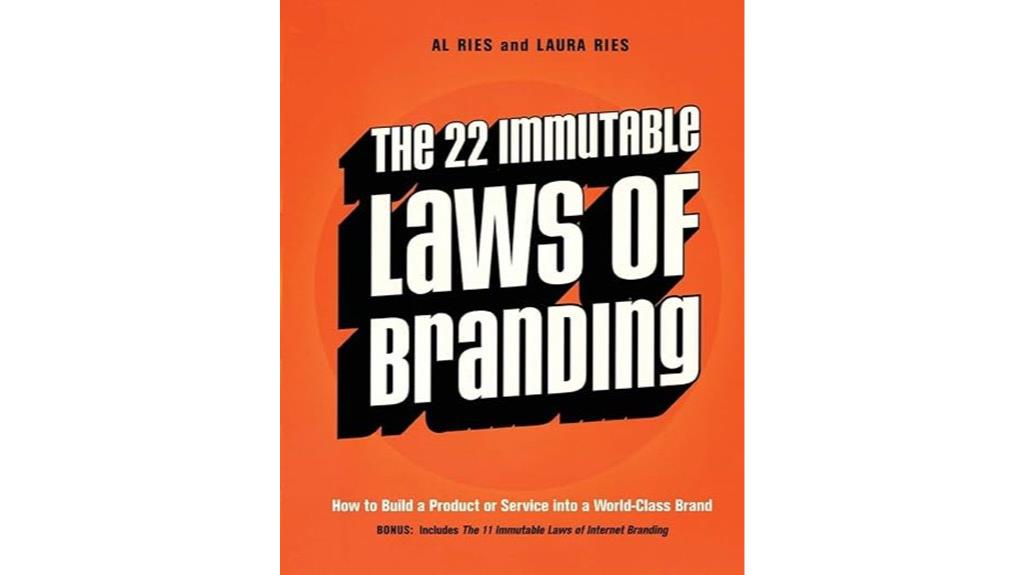
If you’re looking to master the fundamentals of branding, “The 22 Immutable Laws of Branding” is an essential read for entrepreneurs, marketers, and business leaders aiming to build a strong, focused brand. This book offers clear, practical principles about positioning, differentiation, and category creation that help brands stand out. It stresses the importance of focusing on a niche, avoiding overextension, and establishing a unique point of difference. I’ve learned that success comes from clarity in brand identity and owning a specific space in customers’ minds. These timeless laws serve as a solid foundation for creating a memorable, enduring brand strategy.
Best For: entrepreneurs, marketers, and business leaders seeking foundational branding principles to create a focused, memorable, and enduring brand strategy.
Pros:
- Provides clear, practical guidance on brand positioning, differentiation, and category creation
- Uses real-world examples to illustrate successful branding strategies
- Easy to understand and suitable for both beginners and experienced professionals
Cons:
- Some concepts may oversimplify complex branding challenges
- Lacks detailed guidance on managing unavoidable brand extensions
- Focuses primarily on high-level principles, with limited tactical or implementation advice
The 1-Page Marketing Plan Book
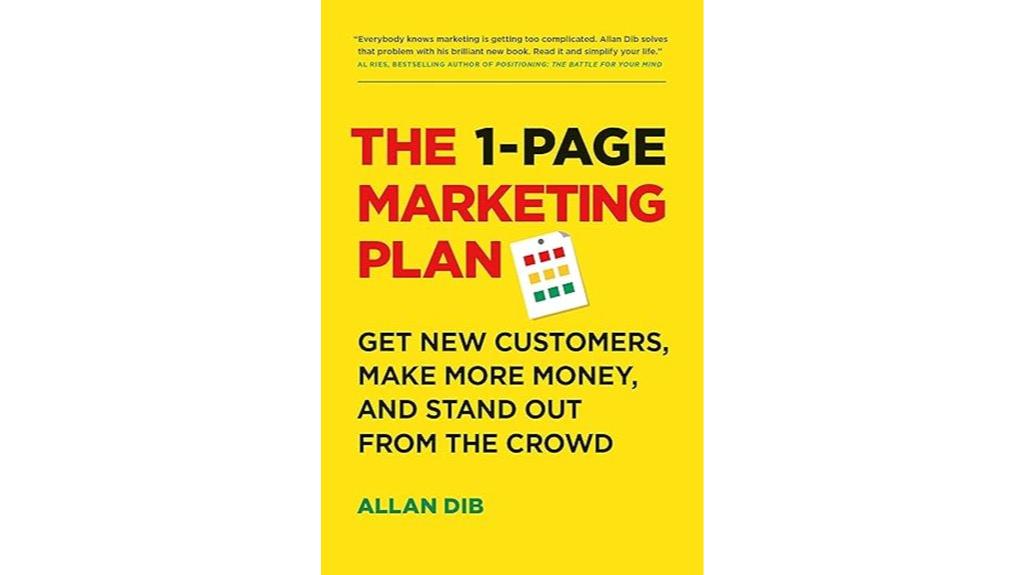
The 1-Page Marketing Plan Book is ideal for small business owners and entrepreneurs who want straightforward, actionable marketing strategies without the complexity of traditional textbooks. I appreciate Allan Dib’s clear guidance, focusing on simple, measurable tactics rooted in human psychology. The book covers the entire marketing cycle—from identifying target markets and creating customer avatars to sales and growth—using real-life stories and analogies. It emphasizes relationship-building, direct outreach, and tracking ROI with digital tools. For anyone seeking practical, step-by-step advice to boost their brand and marketing efforts efficiently, this book is a must-have resource in 2025.
Best For: small business owners and entrepreneurs seeking practical, easy-to-implement marketing strategies grounded in human psychology and measurable results.
Pros:
- Clear, straightforward guidance with actionable steps.
- Emphasizes relationship-building and ethical marketing tactics.
- Uses real-life stories and analogies to enhance understanding.
Cons:
- May require self-discipline to consistently track and measure ROI.
- Some readers might find the focus on small budgets limiting for larger campaigns.
- Since it’s a condensed framework, advanced marketing strategies may need supplemental resources.
Aaker on Branding: The Playbook to Building Strong Brands

For marketing professionals and students enthusiastic to deepen their understanding of brand building, “Aaker on Branding” stands out as an essential playbook. Authored by David Aaker, a leading marketing expert, it combines academic rigor with practical insights. The book introduces his 5Bs framework—covering brand identity, meaning, response, relationships, and extension—offering clear tools to develop strong brands. Through real-world case studies and strategic guidance, it emphasizes the importance of consistency, internal branding, and adapting to evolving consumer behaviors. Updated for today’s market, this book is a valuable resource to create, sustain, and grow impactful brands in 2025’s competitive landscape.
Best For: marketing professionals, students, and brand managers seeking a comprehensive, practical guide to building and maintaining strong brands in a competitive environment.
Pros:
- Combines academic theory with real-world case studies for practical application
- Introduces the clear and actionable 5Bs framework for strategic brand development
- Emphasizes the importance of consistency, internal branding, and adaptability to market changes
Cons:
- Some readers find certain sections dense or overly detailed
- Minor issues with print quality noted by a few users
- Personal writing style preferences may vary, affecting overall engagement
Designing Brand Identity: A Guide to Brands and Branding
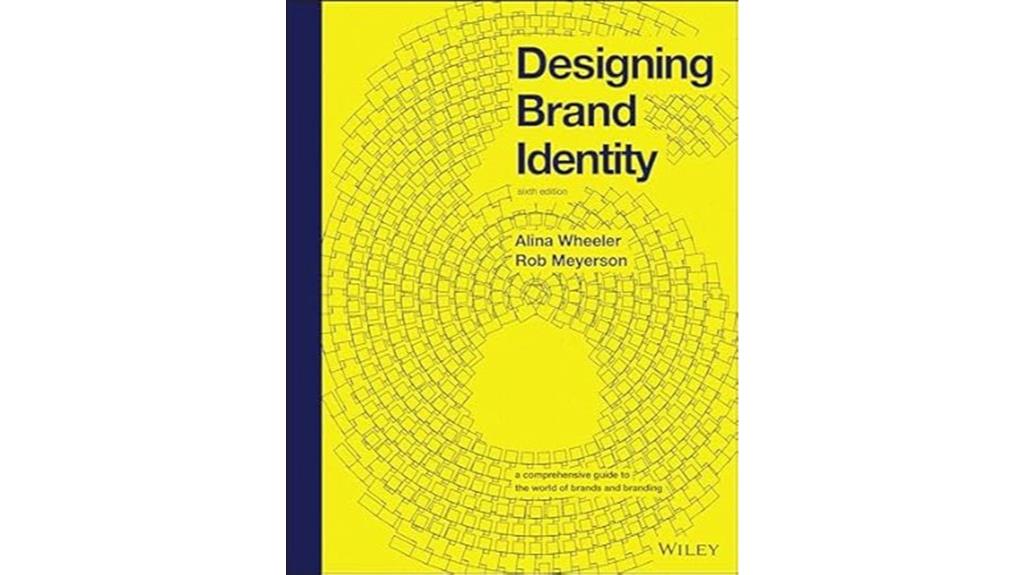
Looking to craft a compelling brand identity that truly resonates? “Designing Brand Identity” stands out as an essential resource for both beginners and seasoned professionals seeking in-depth guidance on brand development. I found it incredibly exhaustive, filled with insightful examples and practical advice that feel like having a mentor by your side. The book covers intricate aspects of brand identity, making it a must-have reference whether you’re working in branding, content creation, or business strategy. Despite some minor shipping flaws, its high-quality pages and visually appealing design make it a valuable addition to any branding library, offering clear, actionable insights to elevate your brand.
Best For: branding professionals, content creators, and business owners seeking an in-depth, practical guide to developing a compelling and impactful brand identity.
Pros:
- Comprehensive coverage of intricate aspects of brand identity with insightful examples
- Highly recommended for both beginners and experienced professionals, making it versatile
- High-quality, visually appealing design with bright covers and durable pages
Cons:
- Some copies may arrive with physical damage such as dents, smudges, or ripped covers
- Minor printing errors like image blurring can affect the reading experience
- The large size may be cumbersome for those seeking a more portable resource
The Black Book of Branding: 7 Covert Steps to Becoming a Master in Branding
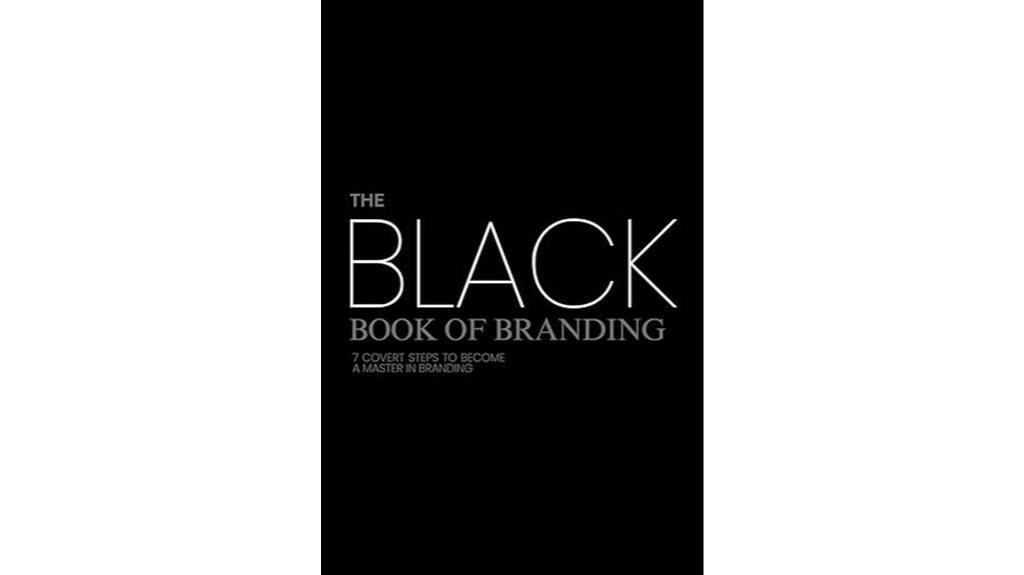
If you’re serious about mastering branding, *The Black Book of Branding* offers a powerful, actionable roadmap tailored for entrepreneurs and marketers seeking to stand out in competitive markets. Ruben Alvarez’s deep experience and practical strategies make this book a credible, impactful guide. It emphasizes branding as a psychological and emotional process—focusing on how consumers feel and perceive your brand. Alvarez simplifies complex concepts into clear frameworks and mindset shifts that help you build authority, hijack emotion, and control narratives. Many readers find it immediately useful, turning insights into real-world actions that elevate their brand presence and influence in crowded spaces.
Best For: entrepreneurs, marketers, and business owners looking to deepen their understanding of branding and elevate their brand presence in competitive markets.
Pros:
- Offers practical, actionable strategies rooted in real-world experience.
- Simplifies complex branding concepts into clear frameworks and mindset shifts.
- Focuses on psychological and emotional aspects of branding to build authority and influence perception.
Cons:
- May require dedicated effort to implement all suggested strategies effectively.
- Some readers might find the focus on psychological elements challenging without prior marketing background.
- The fast-paced, power-play style may feel intense or overwhelming for beginners.
Branding and Interior Design Strategy Guide
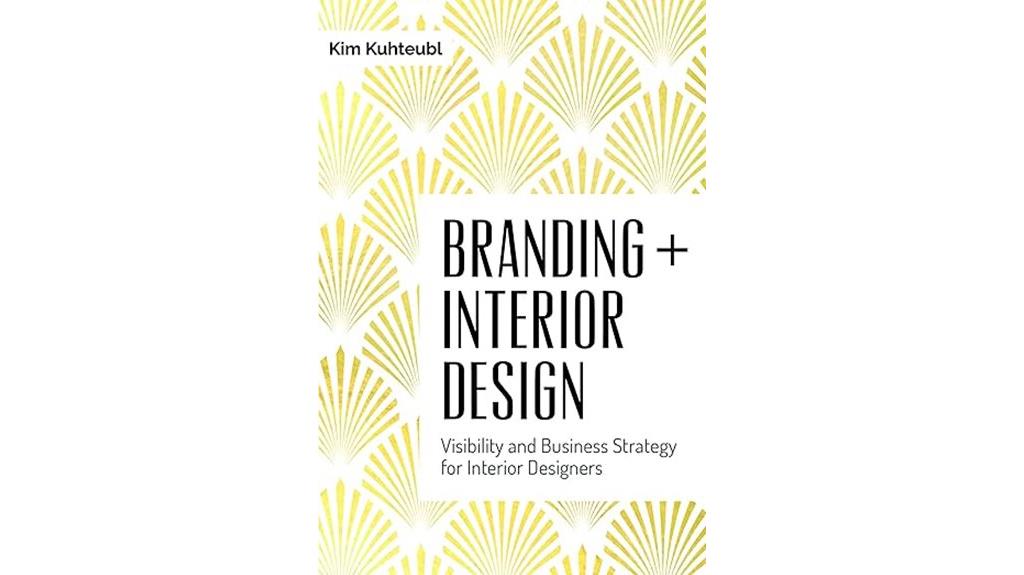
The “Branding + Interior Design” Strategy Guide stands out as an essential resource for interior designers and creative professionals seeking to build authentic, impactful brands. I’ve found it incredibly practical, offering clear, actionable steps to clarify your identity, attract clients, and elevate your presence. The book’s interviews with top designers inspire confidence and motivate self-reflection, helping you align your brand with your true self. It emphasizes authenticity and visibility, providing worksheets and exercises that foster growth. Though the digital format has some flaws, the insights and strategies make this guide a must-have for anyone serious about transforming their interior design business in 2025.
Best For: interior designers and creative professionals who want to develop an authentic, strategic brand to attract clients and elevate their business in 2025.
Pros:
- Provides clear, actionable steps for clarifying your brand identity and marketing approach.
- Features inspiring interviews with top designers that motivate confidence and self-reflection.
- Includes practical worksheets and exercises to support growth and strategic planning.
Cons:
- Digital format has formatting issues that may hinder readability and usability.
- Lacks physical supplementary materials like printed workbooks or journals for enhanced engagement.
- Some readers may find the content more focused on branding than on detailed interior design techniques.
The Fashion Business Manual: All Illustrated Guide to Building a Fashion Brand
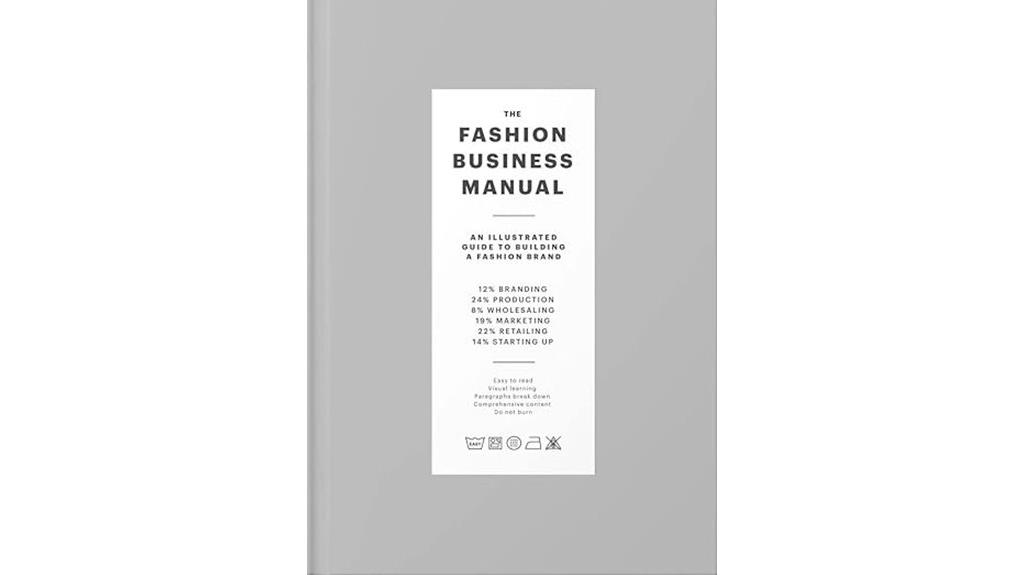
Are you aiming to launch or grow a fashion brand with confidence? The Fashion Business Manual is your go-to resource. It offers clear, step-by-step guidance on building a successful fashion brand, covering everything from defining your USP to sourcing materials and working with contractors. The book’s visual layout—with illustrations, models, and practical examples—makes complex topics accessible. It also dives into marketing strategies, social media timing, and display ideas to help your brand stand out. Whether you’re a beginner or an experienced entrepreneur, this manual equips you with the industry knowledge and tools needed to turn your fashion vision into reality.
Best For: aspiring fashion entrepreneurs and industry professionals seeking a comprehensive, visually engaging guide to building and marketing a successful fashion brand.
Pros:
- Detailed, step-by-step guidance suitable for beginners and experienced entrepreneurs alike
- Rich visual layout with illustrations, models, and practical examples that clarify complex topics
- Covers a wide range of essential topics including product development, sourcing, branding, and marketing strategies
Cons:
- Priced at around $35, which may be considered expensive for some readers
- Some logistical issues with delivery were reported, though generally resolved satisfactorily
- May require supplementary industry experience or knowledge to fully implement all strategies effectively
The Brand Gap: How to Bridge Business Strategy and Design

For business leaders and branding professionals seeking practical guidance, *The Brand Gap* by Marty Neumeier offers a compelling framework for connecting strategy and design. It breaks down complex ideas into simple, visual concepts, emphasizing the importance of aligning brand identity with business goals. Neumeier introduces five core disciplines—Differentiate, Collaborate, Innovate, Validate, and Cultivate—that help create authentic, memorable brands. The book’s engaging style, with visuals and clear lessons, makes it accessible to all. Despite some outdated examples, its core principles remain relevant, guiding you to craft a brand that resonates emotionally and strategically in today’s competitive landscape.
Best For: business leaders, branding professionals, and marketers seeking practical, visual guidance to align their brand strategy with design to create memorable and authentic brands.
Pros:
- Clear, concise insights that simplify complex branding concepts
- Engaging, visual layout that enhances understanding and retention
- Practical framework with actionable disciplines for brand building
Cons:
- Some examples and references may feel outdated in today’s digital landscape
- The layout’s unconventional design might not appeal to all readers
- Lacks in-depth technical strategies for advanced branding or marketing professionals
The LinkedIn Branding Book: Build Your Personal and Business Brand on LinkedIn

Looking to elevate your LinkedIn presence and stand out in a crowded digital landscape? “The LinkedIn Branding Book” by Michelle B. Griffin and Michelle J. Raymond offers practical, easy-to-follow strategies to build an authentic personal and business brand. It covers profile optimization, content creation, and network building, emphasizing visibility and strategic engagement. With actionable tips, real-world examples, and interactive elements, this book empowers you to boost your online impact confidently. Whether you’re new or experienced, you’ll find valuable guidance to clarify your brand message, expand your network, and achieve meaningful growth on LinkedIn. It’s a must-have for anyone serious about professional branding.
Best For: professionals, entrepreneurs, and business owners seeking practical guidance to enhance their LinkedIn branding and online presence.
Pros:
- Provides clear, actionable strategies for profile optimization and content creation
- Includes real-world examples and interactive elements to facilitate learning
- Suitable for users at all experience levels, from beginners to seasoned professionals
Cons:
- May require additional effort to fully implement all recommended strategies
- Some users might find the book’s format or style repetitive or basic
- Limited focus on advanced LinkedIn marketing techniques beyond foundational branding
Factors to Consider When Choosing Branding Books for Businesses

When selecting branding books, I always consider how well they align with my industry and whether their advice is practical for real-world application. I also look at the author’s expertise and credibility to guarantee I’m learning from reputable sources. Finally, I prioritize books with up-to-date content and appealing design to keep my strategy fresh and engaging.
Relevance to Industry
Choosing the right branding book requires confirming it addresses the unique challenges and opportunities within your industry. I look for resources that include case studies or real-world examples from my sector, as they make strategies more relatable and actionable. It’s important that the book discusses current industry trends and how they impact branding efforts, helping me stay ahead of market shifts. I also consider whether the book emphasizes techniques relevant to my industry, such as digital marketing or visual branding, tailored to my market’s standards. Ultimately, I verify the strategies align with my customers’ behaviors and expectations. This relevance guarantees that insights and tactics will resonate with my audience, making my branding efforts more effective and sustainable over time.
Practical Application Focus
Selecting the right branding book hinges on its practical application. I look for titles that include clear, step-by-step strategies and actionable exercises, making it easier to implement concepts directly into my business. Practical tools like worksheets and templates are essential, as they help translate ideas into measurable results. I also prioritize books that feature relevant case studies and examples tailored to my industry or business size, ensuring the advice feels applicable. Additionally, I focus on those that emphasize foundational principles and core tactics so I can adapt strategies to my unique brand. Finally, a good branding book should guide me on integrating strategies into everyday operations and marketing efforts, ensuring consistent and effective execution for long-term growth.
Author Expertise and Credibility
The credibility of a branding book often hinges on the expertise of its author. I look for writers with extensive professional experience and recognized industry credentials, as these signal they’ve successfully navigated branding challenges. Academic backgrounds and published research further boost an author’s authority, showing a deep understanding of branding principles. Proven success in branding campaigns or entrepreneurial ventures adds practical credibility, demonstrating real-world application. Additionally, authors who regularly contribute to reputable industry publications or speak at major marketing events stay current with trends, which is essential for relevant insights. Recognized thought leaders with multiple authoritative publications are generally more trustworthy, providing well-informed guidance I can rely on to shape my brand strategy confidently.
Visual and Layout Design
Have you ever struggled to stay engaged with a dense, poorly designed book? That’s why I prioritize visual and layout design when choosing branding books. A well-structured layout with clear headings, fonts, and visual hierarchy makes content easier to navigate and understand. High-quality images, illustrations, and graphics help clarify complex ideas and keep me interested. Consistent color schemes and visual styles reinforce branding themes and create aesthetic harmony. Ample white space prevents clutter, making pages more inviting and reducing fatigue. Visual elements like charts, infographics, and callouts highlight key insights and support retention. Overall, a thoughtfully designed book not only enhances readability but also makes the learning process more enjoyable, ensuring I get the most out of my reading experience.
Updated and Current Content
Staying current with branding books means choosing resources that reflect the latest industry trends, digital marketing strategies, and shifts in consumer behavior. I look for books that incorporate recent case studies and examples aligned with today’s market conditions and technological advancements. It’s essential that the content includes updates on social media algorithms, online branding platforms, and emerging branding tools to offer actionable insights. I prioritize books authored or revised within the last few years to ensure strategies and frameworks are relevant to the current branding landscape. Additionally, I seek resources that address recent shifts in brand engagement, personalization, and data-driven branding practices. These factors help me stay ahead and adapt my approach to the evolving digital environment, ensuring my brand remains competitive and effective in 2025.
Frequently Asked Questions
How Do These Books Address Evolving Digital Branding Strategies?
These books explore into evolving digital branding strategies by highlighting the importance of authentic storytelling, data-driven insights, and engaging content. I find they emphasize adapting to new platforms like social media and AI tools, encouraging brands to stay agile and innovative. They provide practical tips on building a consistent digital presence that resonates with audiences today, helping me understand how to stay ahead in the fast-changing digital landscape.
Are These Books Suitable for Small Businesses or Only Large Corporations?
Did you know that 70% of small businesses believe branding directly impacts growth? These books are perfect for small businesses because they offer practical, actionable advice tailored to all sizes. I’ve found that they provide insights that are just as valuable for startups as for large corporations. Whether you’re just starting out or looking to refine your brand, these books help you build a strong, authentic presence without needing a massive budget.
Do These Books Include Practical Exercises or Just Theoretical Insights?
Most of these books offer a great mix of practical exercises and theoretical insights. I find that they often include actionable steps, case studies, and exercises you can implement right away. While some focus more on foundational concepts, many provide hands-on activities to help you apply the ideas directly to your business. So, whether you’re looking for inspiration or practical tools, you’ll find valuable content to transform your brand strategy.
How Current Are the Branding Concepts Discussed in These Publications?
You might worry that branding concepts could be outdated, but I find these books stay surprisingly current. They blend foundational principles with recent trends, like digital branding and social media strategies, reflecting the latest industry shifts. While some ideas have timeless value, the authors update their insights to keep pace with evolving market dynamics. So, these publications truly offer relevant, actionable guidance for today’s branding landscape.
Can These Books Help Improve Brand Storytelling Techniques?
Absolutely, these books can help improve your brand storytelling techniques. I’ve found they offer practical insights and innovative ideas that make your brand’s story more compelling and authentic. By applying their concepts, you’ll craft narratives that resonate deeply with your audience. I’ve personally seen my storytelling become more engaging, which has strengthened my brand’s connection and loyalty. These resources are invaluable for sharpening your storytelling skills and standing out in 2025.
Conclusion
Think of these books as your compass on a vast branding ocean. Each one offers a guiding star to steer your business toward success in 2025. Whether you’re refining your identity or building a powerful strategy, these reads will help you navigate the waves with confidence. Plunge in, learn the ropes, and transform your brand into a lighthouse that attracts loyal customers and stands tall amidst the storm. Your journey to branding mastery starts now.









